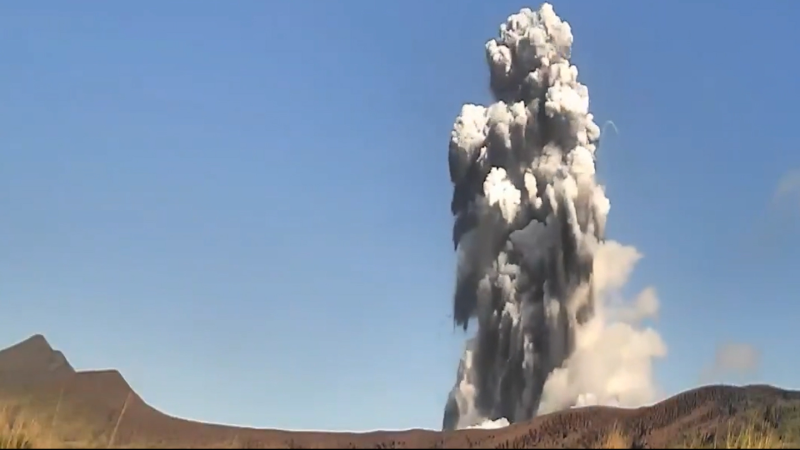Mario's ghost unloads rain, sets off flash flooding in Southern California, southwestern US
Tropical moisture from Mario brought rare September rain to California and the Southwest, triggering flash flooding, mudslides, and travel disruptions—while AccuWeather tracks another potential system early next week.
In a rare occurrence for September in cities like Las Vegas and Los Angeles, wet weather arrived on Sept. 18.
Mario's moisture delivered a gentle rain to some areas but unleashed torrential downpours in others. The rain was generally welcomed in the parched region, and it did lead to problems, as is often the case.
Mario's circulation center dissipated over the Pacific, but tropical moisture traveled across the southwestern United States as rain of varying intensity.
Following the main surge of Mario’s tropical moisture, lingering moisture will produce spotty showers and thunderstorms over the Southwest into Saturday. There continues to be the risk of flash flooding and debris flows in isolated areas of the Southwest.

The rain caused slick roads, triggered mudslides and produced highly localized flash flooding.
A young boy was swept away in fast-moving waters as the vehicle he and his father were traveling in was caught up in a flash flood in Barstow, California. Multiple flash flood warnings were issued by the National Weather Service for parts of Southern California as the heaviest rains moved in on Thursday and lingered into Thursday night.
There have also been incidents of mudslides that damaged homes and swept across roadways.
This was the most significant rain since the spring in many areas.
The last time there was more than 0.01 of an inch of rain at Los Angeles International Airport was in late April when 0.17 of an inch fell. Rainfall from Mario’s moisture was minimal at the airport, only 0.04 of an inch, but other areas picked up more than an inch due to the tropical moisture.

San Diego received 0.45 of an inch, with significantly higher totals in the mountains of Southern California. Big Bear picked up 1.71 inches with China Lake racking up 3.17 inches.
Drenching rain also reached California's Central Valley, with Fresno accumulating about 0.81 inches. The rainfall is 2,600% of the average for the month so far, with a historical average of 0.03 inches.
Rain reached the deserts as well with Palm Springs and Needles, California, picking up 0.28 and 0.33 of an inch respectively. Phoenix and Las Vegas managed just under 0.25 of an inch.

The rainfall represents many times the historical average for September in Southern California with most areas tending to receive between 0.10 and 0.33 of an inch the entire month.
The rainfall from Thursday to Friday provided little soil saturation, but AccuWeather meteorologists are already monitoring another system forecast to bring more rain early next week.
"While this new storm setup is likely to bring less rain overall, when compared to Mario, it may produce localized downpours capable of triggering flash flooding," AccuWeather Senior Meteorologist Heather Zehr stated.

The setup for the first few days of next week may feature more thunderstorm activity than Mario's. Where thunderstorms bring little rain in areas that missed out on Mario's downpours, lightning could ignite new wildfires.
Want next-level safety, ad-free? Unlock advanced, hyperlocal severe weather alerts when you subscribe to Premium+ on the AccuWeather app. AccuWeather Alerts™ are prompted by our expert meteorologists who monitor and analyze dangerous weather risks 24/7 to keep you and your family safer.
Report a Typo














